Free State of Saxony
The Free State of Saxony is one of the 16 Federal German states located in Germany’s south-east with external borders to Poland and the Czech Republic (population of 4.1 million). Saxony was a medieval duchy founded around 700. In 1423, it became an electorate of the Holy Roman Empire and 1806 a kingdom. The House of Wettin ruled Saxony from 1423-1918. Between 1697 and 1763, the Saxon sovereigns were also kings of Poland. In 1918, Saxony became a constituent of Germany (now a republic) as Free State of Saxony. After WWII it belonged to the German Democratic Republic (East Germany) founded in 1949. In 1952, the Free State was split into 3 smaller administrative units. After the German reunification, the Free State of Saxony was re-established on October 3, 1990.
Saxony is a region with a rich history taking pride in its cultural but also industrial heritage. There are numerous places of interest: castles and fortresses, many towns and villages dating back hundreds of years.
Leipzig
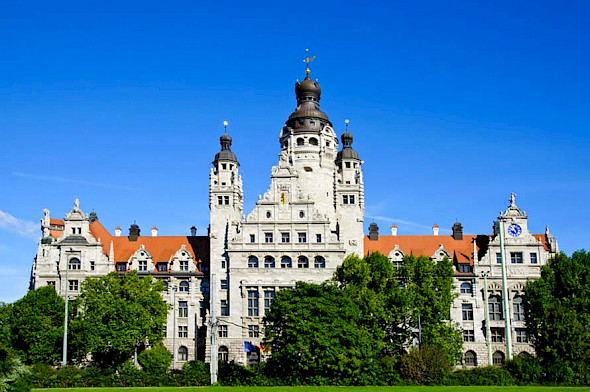
With about 520,000 inhabitants, Leipzig is the second largest city of Saxony. Situated at the intersection of 2 important medieval trade routes it has been a trade center for centuries. The Leipzig trade fair is the world’s oldest still active trade fair. Founded in 1409, the university is one of the oldest in Europe. It prides itself on many famous professors (Heisenberg, Hertz and Lessing) and students (Goethe, Nietzsche and Germany’s current chancellor Angela Merkel). The great composer, J. S. Bach worked in Leipzig from 1723 to 1750. In 1813, the largest battle in Europe prior to WWI, the battle of nations, was fought near Leipzig which ended in the final defeat of Napoleon. In 1989, the “peaceful revolution” against the East German government started in Leipzig which eventually resulted in the reunification of Germany. Today, Leipzig is an important cultural and industrial center. Companies located in and around Leipzig include: BMW, Porsche, Siemens, DHL, Amazon etc.
Görlitz
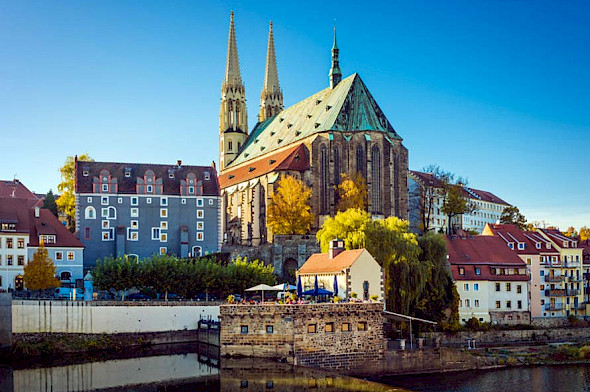
Görlitz (population 52,000) is the easternmost German town located on the Neisse River, the German/Polish border. The close relationship with Zgorzelec, the Polish part of Görlitz, is a good example for the peaceful coexistence of 2 nations. Except for the bridges, Görlitz did not suffer much from destruction in WWII. The town is well preserved with many beautiful buildings (gothic, baroque, renaissance, historicist, art nouveau). Due to its unique historical architecture, the town does not only attract tourists but also the movie industry, e.g. “Pride of the Nation”, “The Reader” and other movies were shot in Görlitz. Industry in and around includes: Bombardier (railway cars), Siemens, software companies, brewery, sweets etc.
Meißen - Albrechtsburg Castle
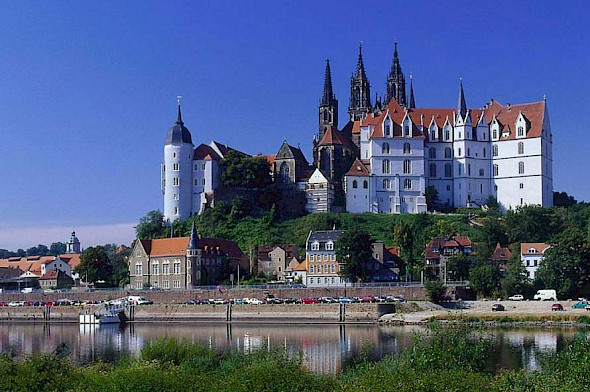
The Albrechtsburg Castle in Meißen - the “cradle of Saxony” is a late gothic castle dominating the silhouette of the city of Meißen. It was built in 925 by Henry I of Germany who had finally conquered the Slavic settlements in this area. In 965, it became the residence of the Wettin dynasty the later rulers of Saxony. After the division of the Wettin lands in 1485, the castle remained the seat of the Albertinian line until they relocated their residence to Dresden in 1547.
In 1707, the first European hard-paste porcelain was produced at Albrechtsburg. At this time, the would-be-gold maker Johann Gottfried Böttcher was imprisoned here. Instead of gold he succeeded in making porcelain which turned out to be “white gold” that filled the notoriously empty treasury of the king; he established the first European hard-paste porcelain manufactory at the castle in 1710 which operated there until in 1863.
Elbe Sandstone Mountains
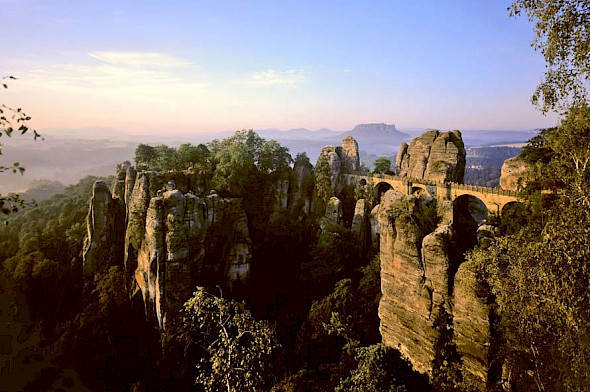
The Elbe Sandstone Mountains stretch on both sides of the Elbe River, the greater part in Saxony and about one quarter in Bohemia (Czech Republic). Due to the extra-ordinary landscape it is also referred to as Saxon-Bohemian Switzerland. In both countries the Sandstone Mountains are under statuary protection (national parks and protected areas). The mountains are very popular among hikers and climbers. Tourists enjoy also the cycling path along the Elbe River or rides on the Elbe pleasure steam boats.
Stolpen Castle
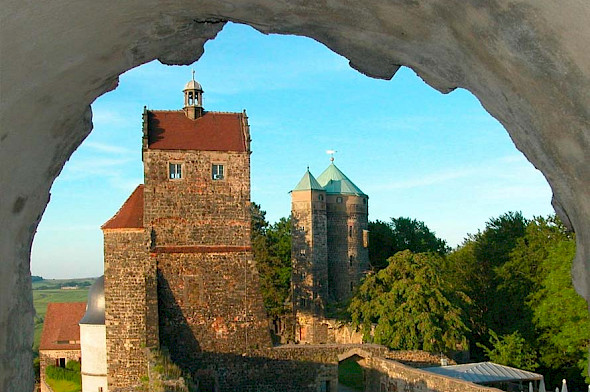
Stolpen Castle was built around 1100 as wooden fortification. Over the centuries, it changed hands very often. In 1559, the Saxon dukes acquired the castle which became famous in the 18th century when King August II used it as prison for the countess Kosel his former mistress and mother of 3 of his children. Allegedly she interfered in political affairs and was sent away from the court. She died after 49 years of imprisonment. In the 19th century the castle was opened to the public.
Kriebstein Castle
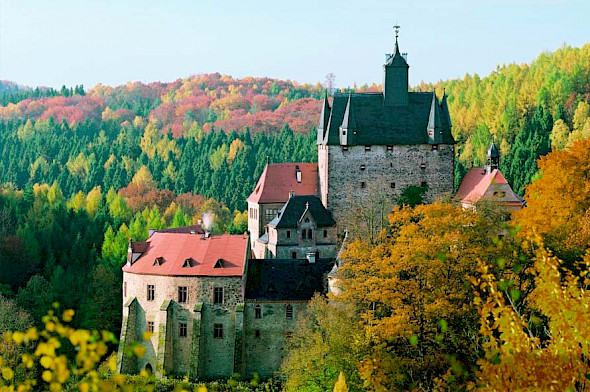
Kriebstein Castle is a more than 600 years old gothic castle towering over a small river on a steep rook. The castle is well preserved and provides the perfect setting for medieval knights’ tournaments. It used to be the residence of numerous noble families. In 1930 it was opened to the public.
Königstein Fortress
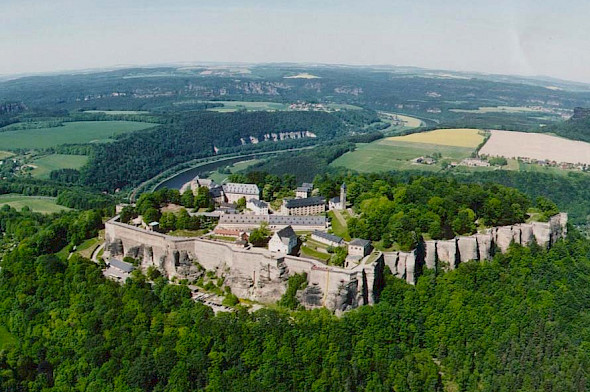
Königstein Fortress, the Saxon Bastille, is situated on the banks of the Elbe River. Mentioned as early as 1233, it was never involved in major military actions but was also never conquered. The Saxon monarchs used it as a safe place of refuge during besiegement and storage place for their treasures. From 1591 until 1922 it was the best known Saxon prison. In 1955, the fortress was opened to the public and has since been an open air military-historic museum
Muskau Park and Castle
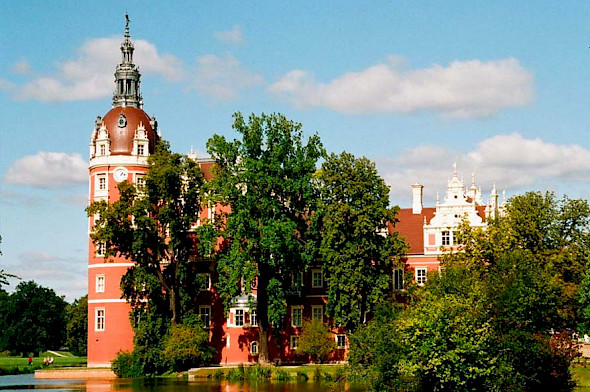
Muskau Park and Castle. The castle was built as a fortification at the Neiße River in the 13th century. The surrounding park was founded by Prince Hermann von Pückler-Muskau. Inspired by English landscape gardening he transformed the estate into a huge landscape park between 1815 and 1845. In WW II, the park suffered severe damage. After the war, when the Neiße River became the border between Poland and Germany, the park was divided. German and Polish administrations cooperate to complete the restoration of the park which covers currently about 830 hectares. In 2004, the park was included in the UNESCO World Heritage List.
Ortenburg Castle
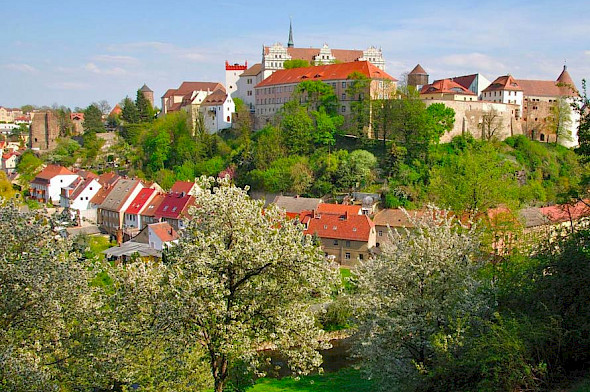
Ortenburg Castle is located in Bautzen, a city 50 km East of Dresden. It was built in the 10th century when German tribes occupied Slavic area. After alternating Polish, Bohemian and Hungarian rules the elector of Saxony conquered it in 1620. From then on, it belonged to Saxony. In 1645, after the 30-years war it was rebuilt with Renaissance elements. It suffered heavy destructions in WWII, was restored and is now open to the public.
Pillnitz Castle
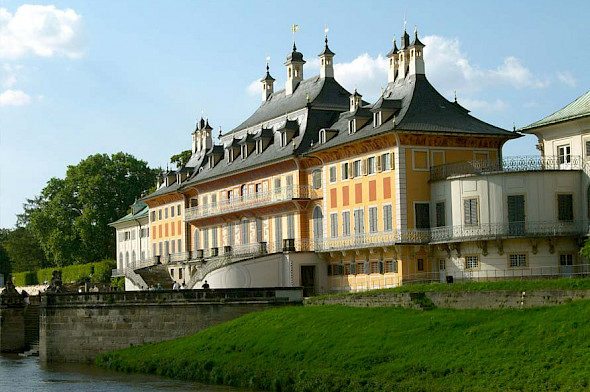
Pillnitz Castle is a restored baroque castle on the banks of the Elbe River East of Dresden. It served as summer residence of the Saxon rulers between 1694 and 1918. During this time the castle underwent many changes. In 1720, August II ordered to convert it into an oriental summer palace. Various buildings, mainly in the chinoiserie style, incl. a gondola dock were added. The complex is surrounded by a huge park with an English and Chinese garden. The most famous botanical attraction is a meanwhile 9-m high camellia, imported from Japan in 1776 which is producing approx. 35,000 blossoms each spring. Castle and park are open to the public.
Colditz Castle

Colditz Castle, a renaissance castle in Colditz near Leipzig, was first mentioned in the 11th century. In 1404, the rule of the Colditz dynasty ended and the Wettin family bought the estate. Destroyed and rebuilt several times, it was used for various purposes. In 1933, the Nazis turned into a political prison. From 1939 it was a prisoner of war high security camp. After a complex restoration in 2007, it is now a museum showing some of the escape attempts of the allied officers’ during WWII. The castle became famous abroad through the BBC series “The Colditz Story”.
Moritzburg Castle
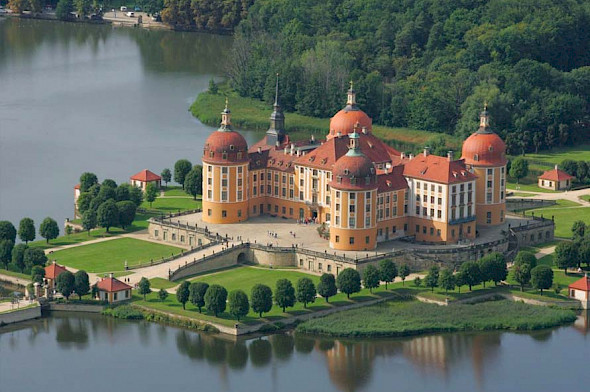
Moritzburg Castle, named after Duke Moritz of Saxony, who ordered to build a hunting lodge in his favorite hunting grounds close to his residence, was built in renaissance style on an artificial island from 1542 to 1546. August II decided to convert the renaissance building into a baroque hunting and pleasure lodge. Between 1723 and 1733, a park with ponds, a game reserve and pheasant house were added. His great grandson further extended the site (1770-76) by working and living quarters and a miniature harbor on the great lake. The last resident of the castle (1933-45) was Prince Ernst Heinrich of Saxony until the expropriation of the Wettin dynasty. Today, castle and park are a museum.
Wackerbarth Castle
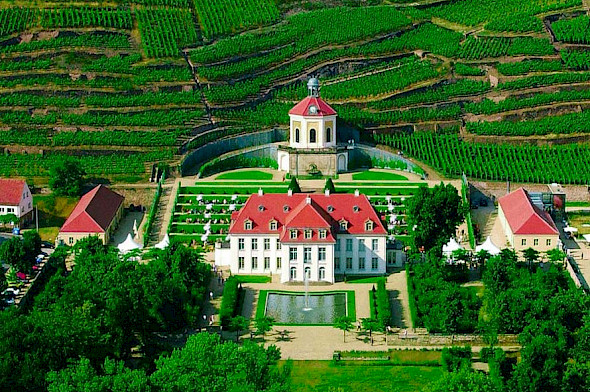
Wackerbarth Castle is situated in Germany’s smallest wine-growing region in the Elbe valley where the climatic conditions are favorable for wine-growing. The estate, built in 1727/28 as a baroque manor house is named after Count of Wackerbarth, who intended it as his retirement residence. After his sudden death, castle and vineyard changed hands many times. Since 1928 it is state-owned. Today it is operated by the "Saxon State Winery Schloss Wackerbarth" limited company. In 2001/02 a "transparent factory" was built for the production of wines and sparkling wines. Palace and vineyard are open for the public.
Klaffenbach Castle
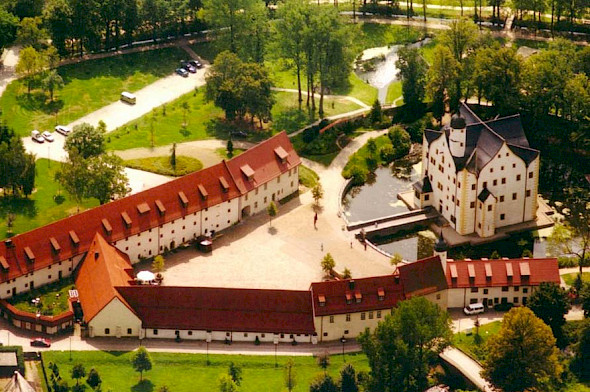
Klaffenbach Castle is situated in Chemnitz. It is practically the only moated renaissance castle in Saxony. It was built in 1555-1560 and was the property of a rich principal of a mint. Later it belonged to noble and common families. Since1926 it has been administrated by the municipality. Between 1947 and 1989 it was a reform school and the buildings decayed. In 1991, the mansion underwent a comprehensive restoration. Today it hosts a museum and hotel.